***** Limited ARES Mobilization during Boston “First Night” Activities *****
**** Metro Boston District Only. All other Districts will be on Standby Status ****
Hello to all…
There will be a limited ARES Mobilization during Boston “First Night” Activities in the Metro Boston District Only. All other Districts will be on Standby Status to provide any needed support to the Metro District. SEMARA ARES and the SEMARA club emergency team have been mobilized for this event by South Shore/Bristol MA DEC, Rob, KD1CY.
Please consider yourself on 24 hour notice for activation. The scheduled time for the mobilization is from 1800, 31 Dec to 0100, 1 Jan. Please do not self mobilize to any location. Your DEC will contact you directly should your services be needed elsewhere. Please plan on providing relay services from your home during the “in-disaster” phase of an incident. Please review these procedures on our website, as well as helpful family preparedness info at http://www.ready.gov. Please guard the RACES repeater for your area at all times during the mobilization, including assuming net control until relieved. Please make liberal use of other frequencies/nets as established by your DEC. “Post-disaster” activities will be determined subsequent to this message.
Additionally, the mobilization in the Metro District will be in direct support of dedicated and contingency operations of our two of our major clients; the Red Cross (RC) and the Salvation Army (SA). The latter organization will also mobilize their Salvation Army Team Emergency Radio Network (SATERN) at the Boston Headquarters. SATERN usually draws from selected ARES and Boston Amateur Radio Club (BARC) for manning.
Mass Bay Chapter Red Cross will mobilize at the Waltham Chapter facility, and has specifically requested ARES support. Metro DEC, Mark, KB1EKN will lead our efforts there as an ICS leader. I will collocate with Mark to perform my section coordination duties, and to substitute for Mark should he be called away to deal with real world problems. As of this writing, it seems unlikely I will be taking up my duties at the SEOC.
[Please press “Read More” to view Mark’s OpPlan, the frequency plan, and VHF/UHF Repeater and 75m net activation preambles.]
s/Michael P. Neilsen
Michael P. Neilsen, W1MPN
Eastern Massachusetts
Section Emergency CoordinatorAMATEUR RADIO EMERGENCY SERVICE
METRO-BOSTON DISTRICT
FROM: Mark Duff/KB1EKN,
Metro-Boston DEC
TO: ARES Members
SUBJECT: ARES Activation UPDATE 1
DATE: 12-28-2003
Apparently my E-Mail about the ARES activation on the 31st was not as clear and understandable as it should have been and therefore I will attempt to do a better job of explaining what is going on.
Due to the Orange Terror Alert Status, the Salvation Army and the Red Cross will be staffing their EOC’s during New Years Eve. This is not a full-blown activation for these agencies but there will be a limited amount of people on duty. The Salvation Army will be operating from their Hqts. in downtown Boston. The Red Cross will be operating out of their field office in Waltham. ARES will be supporting both agencies. This is a limited ARES activation in Metro-Boston.
I am requesting assistance in three areas on New Years Eve between 1800 and 0100 hours. You do not need to commit to that entire time. I am just trying to get a handle on who is available and who is interested in helping. This E-mail is only being sent to a limited amount of ARES members, as I need people I can depend on and trust.
The three areas needing attention are the following:
Home Stations,
If you plan on being home during the evening and can get on the air IF NEEDED, please let me know. Home stations are a vital part of the ARES organization and I encourage all ARES members to be prepared to operate from home. You do not need to be on the air, I just need a commitment that can get on the air if needed.
Red Cross EOC, Waltham
If you are available to staff the Red Cross EOC in Waltham for any where between two and four hours please contact me. There is a duel band antenna at the facility. All that is required is a 2-meter mobile radio and power supply. I will supply a radio and PS if needed. I do not expect a lot of activity at this assignment but it is important that we have someone there.
If possible I would like to run this in shifts and have two hams on duty between 1800 and 0100. Two, four-hour shifts work best but other arraignments may be possible.
Field Assignments
No Field Assignments are anticipated at this time. In the event that a field assignment is required, it will depend on the specific incident and the needs of that incident. Needless to say safety will be the primary concern with any field assignment and no assignments will be given to any ham unless it is considered totally safe and has prior approval by the ARES leadership.
Again, I am just looking for availability.
If you plan on being in Boston as part of the First Night Festivities, I encourage you to carry your HT and enjoy the evening!
Please do not hesitate to contact me directly at 781-749-7664 or by E-Mail if you have any questions. This is an opportunity for Amateur Radio to shine and for us to practice our skills. I don’t want to let it pass us by.
Metro-Boston ARES Frequency Plan for Operations on 12/31/03-01/01/04
The following frequency plan is being established for operations during the evening of 12-31-03 into Jan 1st. The Metro-Boston ARES Activation will be primarily a 2 meter event. The additional frequencies listed are being established in the event that expansion of the plan or additional communications are need. If additional repeaters are required or simplex operations becomes necessary the plan allows it for it in an orderly and systematic manner.
We are requesting that all ARES stations operating in the Metro-Boston District operate on 145.23 or 146.64. The Boston 145.23 repeater is currently operating at reduced capacity. We will continue to plan to use it as the Boston Primary Repeater. It is expected that MMRA will be linking the 146.67/Quincy, 146.985 /Brookline, 447.875-Brookline (UHF) and 146.715/Stoneham repeaters during the evening of the 31st. The MMRA linked repeaters will serve as back-up for both Boston and Waltham, and may be used for any ARES communications.
Metro-Boston 2 Meter ARES Repeater Frequencies
Boston Primary 145.23/88.5 [Repeater located in Boston]
Waltham Primary 146.64 [Repeater located in Waltham]
{Additional 2 Meter repeaters if required} [Expected to be linked]
Boston North 146.715/146.2 [Repeater located in Stoneham]
Boston West 146.985/88.5 [Repeater located in Brookline]
Boston South 146.67/146.2 [Repeater located in Quincy]
2 Meter ARES Simplex Frequencies
147.42
146.415
146.430
146.445
146.460
146.475
2 Meter RACES Repeater Frequencies
RACES Primary 146.64 [Repeater located in Waltham]
RACES Secondary
HF Frequencies
3.943+/- LSB (Primary)
7.245 (Secondary)
220 Frequencies
Primary 224.40/ [Repeater located in Quincy]
Secondary 223.78/ [Repeater located in Belmont]
70CM Repeater Frequencies
Boston 447.175/110.9 Rep. Located in Boston
Boston 446.575 Rep. Location in Boston
Brookline 447.975/88.5 Rep. Located in Brookline
[Linked to Boston North and Boston West]
New England Network of Echolink and IRLP Nodes and Repeaters
The New England Network of IRLP and Echolink Nodes and Repeaters will be linked on New Year’s Eve Night providing coverage across portions of Eastern Massachusetts, Western Massachusetts, Rhode Island and Connecticut. Echolink Node # 9123 or IRLP Reflector Node# 9055 will get you access into the network. With Echolink, you could get into the system from your PC with either dial-up or broadband Internet access. The following are repeaters in Eastern Massachusetts and Rhode Island that will allow for connection into the New England Network:
145.390-Scituate, Mass.
443.800-South Dartmouth, Mass. PL: 88.5 Hz
447.025-Johnston, RI PL: 77.0 Hz
Additional HF Frequencies:
KB1DAV-Mario Bruno, CT Disaster Services State Lead Director provided the following additional HF Frequencies:
3.915 MHz. Statewide amateur (Tri-state frequency)
7.280 MHz. Backup.
SATERN RI Simplex Net:
Frank Murphy-N1DHW from Boston Salvation Army mentioned that RI SATERN would be having a net at 2330 on 146.58 Simplex. The SEMARA Club will attempt to make contact with them at that time. N2NCL-Dennis will be running the net.
75m Preamble
Calling the Boston First Night Limited ARES Activation Net….
Calling the Boston First Night Limited ARES Activation Net….
This is at the mic, my name is and I am located in . The purpose of this net is to have a brief call-up between all served agencies that are involved in monitoring Boston First Night activities. We will have two call-ups. The first call-up will be a roll-call of all served agencies and a call for ARES leadership who are monitoring to check-in and state whether they have traffic or announcements for the net. The second call-up will be for any licensed Amateurs to check into the net. We will then have a brief round of comments from all stations that have checked into the net.
The first call-up will be for stations participating in the activation. Please state whether you have traffic or announcements for the net:
-Calling Boston Salvation Army Headquarters….
-Calling Mass. Bay Red Cross in Waltham….
-Calling MEMA Framingham State EOC….
-Calling ARES SEC or DEC leadership….
The second call-up will be for any stations wishing to check into net. Any stations wishing to check into net please say, This is….pause and give your call-sign, name and location. Stations wishing to check into the net, please call now:
Hearing no other check-ins, this is wishing to thank all stations who stood-by while the net was conducted. Eastern Massachusetts ARES would like to thank all repeater trustees, Amateurs and Radio Clubs for their cooperation and use of the frequency. We will return the frequency back to normal Amateur Radio use but ask Amateurs to leave sufficient pauses to allow for emergency traffic. The next net call up will be at XX:XX Local time. This is saying 73 for now and signing clear.
VHF/UHF Repeater Preamble
Calling the Boston First Night Limited ARES Activation Net….
Calling the Boston First Night Limited ARES Activation Net….
This is at the mic, my name is and I am located in . The purpose of this net is to have a brief call-up between all served agencies that are involved in monitoring Boston First Night activities. We will have two call-ups. The first call-up will be a roll-call of all served agencies and a call for ARES leadership who are monitoring to check-in and state whether they have traffic or announcements for the net. The second call-up will be for any licensed Amateurs to check into the net. We will then have a brief round of comments from all stations that have checked into the net.
The first call-up will be for stations participating in the activation. Please state whether you have traffic or announcements for the net:
-Calling Boston Salvation Army Headquarters….
-Calling Mass. Bay Red Cross in Waltham….
-Calling MEMA Framingham State EOC….
-Calling ARES SEC or DEC leadership….
The second call-up will be for any stations wishing to check into net. Any stations wishing to check into net please say, This is….pause and give your call-sign, name and location. Stations wishing to check into the net, please call now:
Hearing no other check-ins, this is wishing to thank all stations who stood-by while the net was conducted. Eastern Massachusetts ARES would like to thank all repeater trustees, Amateurs and Radio Clubs for their cooperation and use of the frequency. We will return the frequency back to normal Amateur Radio use but ask Amateurs to leave sufficient pauses to allow for emergency traffic. The next net call up will be at XX:XX Local time. This is saying 73 for now and signing clear.


 The North Middlesex ARES group meets at the Adams Library in Chelmsford Center on the fourth Monday of each month at 7:00 PM. All amateurs are invited. For further information, contact Darrel at
The North Middlesex ARES group meets at the Adams Library in Chelmsford Center on the fourth Monday of each month at 7:00 PM. All amateurs are invited. For further information, contact Darrel at  ARRL members active in the ARES and NTS programs in Eastern Massachusetts met Saturday, April 24 in Bridgewater to achieve greater cooperation between their respective programs. Section Manager Phil Temples, K9HI called for the workshop in light of recent reports and recommendations by the League’s Volunteer Resources Committee, and the ad-hoc ARES Committee.
ARRL members active in the ARES and NTS programs in Eastern Massachusetts met Saturday, April 24 in Bridgewater to achieve greater cooperation between their respective programs. Section Manager Phil Temples, K9HI called for the workshop in light of recent reports and recommendations by the League’s Volunteer Resources Committee, and the ad-hoc ARES Committee. “It was a great day where much was accomplished,” concluded Assistant Section Emergency Coordinator Rob Macedo, KD1CY. Macedo coordinated and chaired the workshop.
“It was a great day where much was accomplished,” concluded Assistant Section Emergency Coordinator Rob Macedo, KD1CY. Macedo coordinated and chaired the workshop.

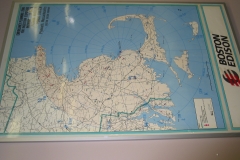
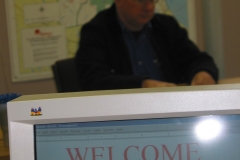
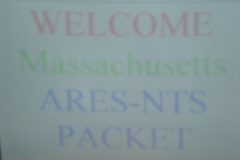
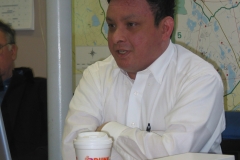

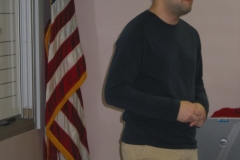
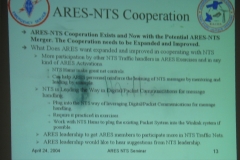
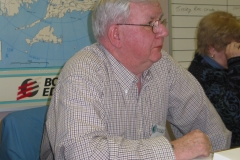
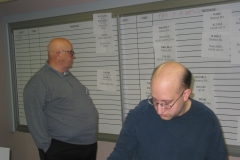
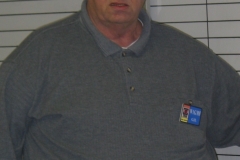

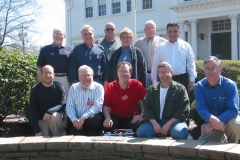
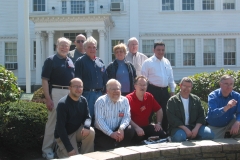
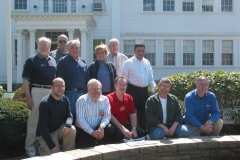
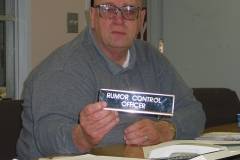
 Please click
Please click 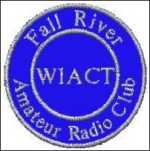 Rob Macedo will be the speaker at the Bristol County Repeater Association April meeting, set for April 5th at 7 PM. Rob will be covering topics including emergency communications, ARES and Skywarn.
Rob Macedo will be the speaker at the Bristol County Repeater Association April meeting, set for April 5th at 7 PM. Rob will be covering topics including emergency communications, ARES and Skywarn. [Bill, N1VUX, is Primary NCS for Northeastern SKYWARN operating primarily on the Waltham repeater. He is also a regular contributor of information on VHF/UHF ducting, using his predictive model. He will also occasionally comment on other unusual atmospheric phenomena affecting communications – W1MPN]
[Bill, N1VUX, is Primary NCS for Northeastern SKYWARN operating primarily on the Waltham repeater. He is also a regular contributor of information on VHF/UHF ducting, using his predictive model. He will also occasionally comment on other unusual atmospheric phenomena affecting communications – W1MPN]
 CCARES will hold its “Operation Big Chill” exercise this Saturday, 31 Jan at 1000 throughout the Cape and Islands District.
CCARES will hold its “Operation Big Chill” exercise this Saturday, 31 Jan at 1000 throughout the Cape and Islands District. “This will be a drill to test our primary stations and other ARES member home stations,” explained District Emergency Coordinator Frank O’Laughlin, WQ1O. “We will attempt to utilize HF NVIS, VHF/UHF simplex FM. We’ll also utilize VHF/UHF SSB and digital modes. And we will attempt communications with other ARES districts and their EOCs.”
“This will be a drill to test our primary stations and other ARES member home stations,” explained District Emergency Coordinator Frank O’Laughlin, WQ1O. “We will attempt to utilize HF NVIS, VHF/UHF simplex FM. We’ll also utilize VHF/UHF SSB and digital modes. And we will attempt communications with other ARES districts and their EOCs.” Grab your boots and mittens—oh, and your Go-kit for the Cape Cod Amateur Radio Emergency Service’s (CCARES) winter cold weather exercise on January 31, 2004 beginning at 9:00 a.m. Dubbed “Operation Arctic Chill” the exercise will test the ability of Emergency Operation Centers, zone-based relay stations, and field operations teams under freeezing, weather conditions.
Grab your boots and mittens—oh, and your Go-kit for the Cape Cod Amateur Radio Emergency Service’s (CCARES) winter cold weather exercise on January 31, 2004 beginning at 9:00 a.m. Dubbed “Operation Arctic Chill” the exercise will test the ability of Emergency Operation Centers, zone-based relay stations, and field operations teams under freeezing, weather conditions.  The Southeastern MA ARA activated ARES on Monday, December 1, 2003 in response to a widespread power outage that extended from the Plymouth area to Provincetown, Cape Cod and the Islands, extending roughly from Dartmouth/Westport eastward across much of South Coastal Massachusetts. [
The Southeastern MA ARA activated ARES on Monday, December 1, 2003 in response to a widespread power outage that extended from the Plymouth area to Provincetown, Cape Cod and the Islands, extending roughly from Dartmouth/Westport eastward across much of South Coastal Massachusetts. [ Hello to all…
Hello to all…